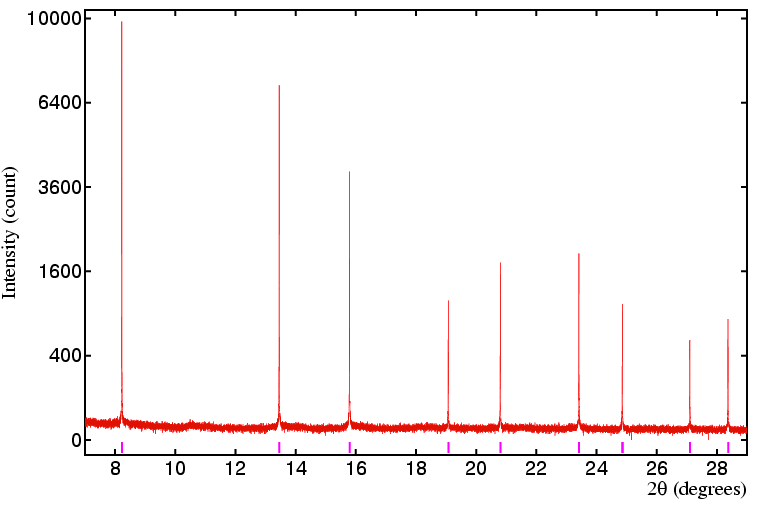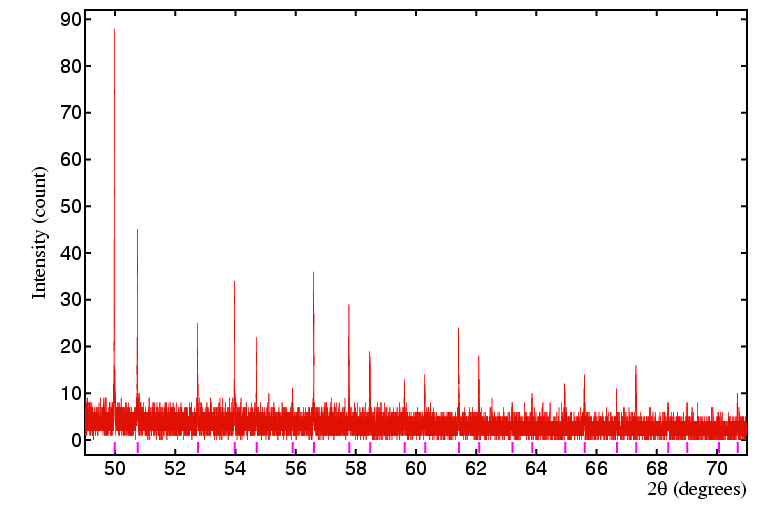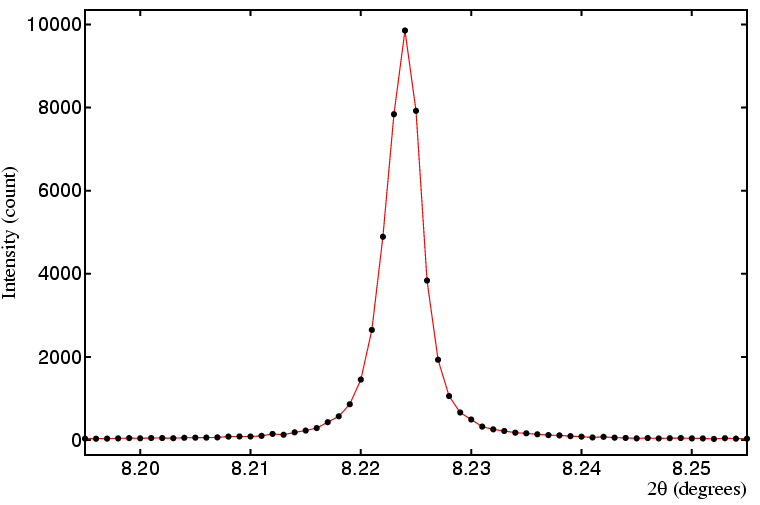 |
Ultra-High-Resolution Angle-Dispersive Data |
 |
Ultra-High-Resolution Angle-Dispersive Data |
Ultra-High-Resolution Angle-Dispersive Data
The dedicated powder diffractometer ID31 at the ESRF, Grenoble, represents the current state-of-the-art. This instrument, formerly on the bending magnet position BM16, can produced ultra-high-resolution data in a very short time. The test data shown below were collected on ID31 with the wavelength set to 0.45 Å using a capillary mounted NBS silicon sample (640b) at a speed of 10°2θ/min, and covered the 2θ range -3.0° to 98°.
For clarity, the low angle data is shown on a square-root scale, while the second section of the powder pattern is shown on a linear scale.


With this particular scan, which was exceedingly rapid, the height of the peaks are starting to reach background level at about 70° 2θ; with slower scan speeds it would be possible to measure peak intensities to much higher angles. The peak at 70.694° is equivalent to a d spacing of about 0.39 Å. This demonstrates that hard-energy synchrotron X-rays can now compete directly with time-of-flight neutron methods (to be discussed later) with regard to real-space resolution limits.
The width of the peaks is particularly impressive: the width of the Si 111 reflection peak shown below is less than 5/1000th of a degree; the peak shape is a near perfect Lorentzian (to be discussed later).

| © Copyright 1997-2006. Birkbeck College, University of London. | Author(s): Jeremy Karl Cockcroft |